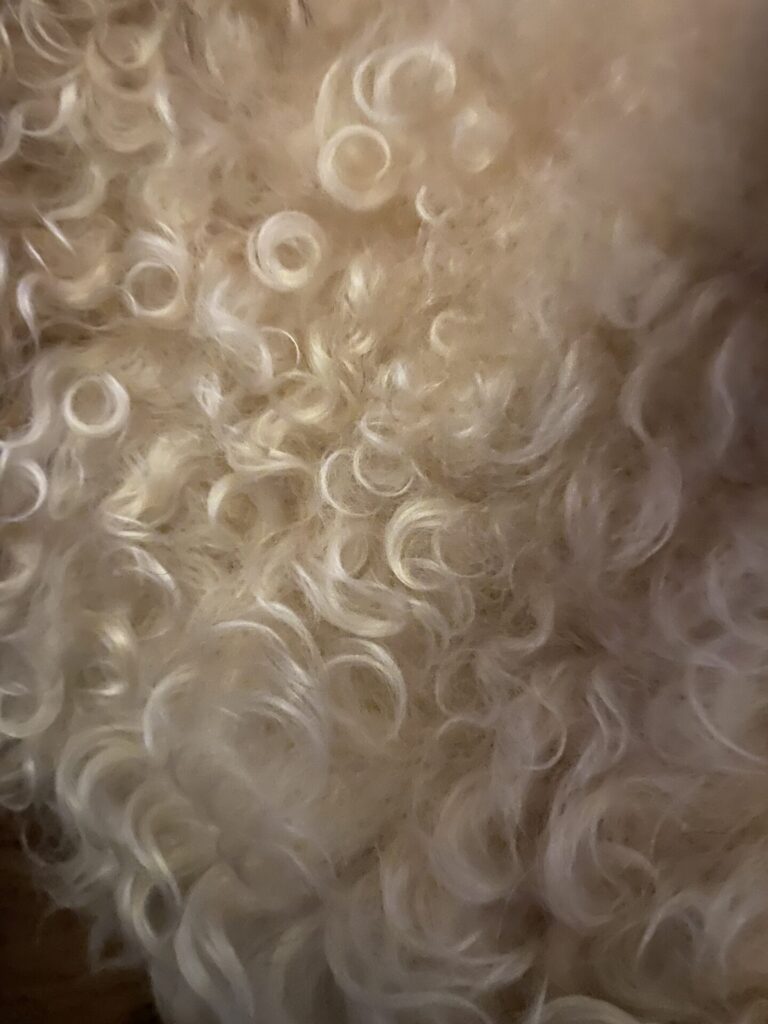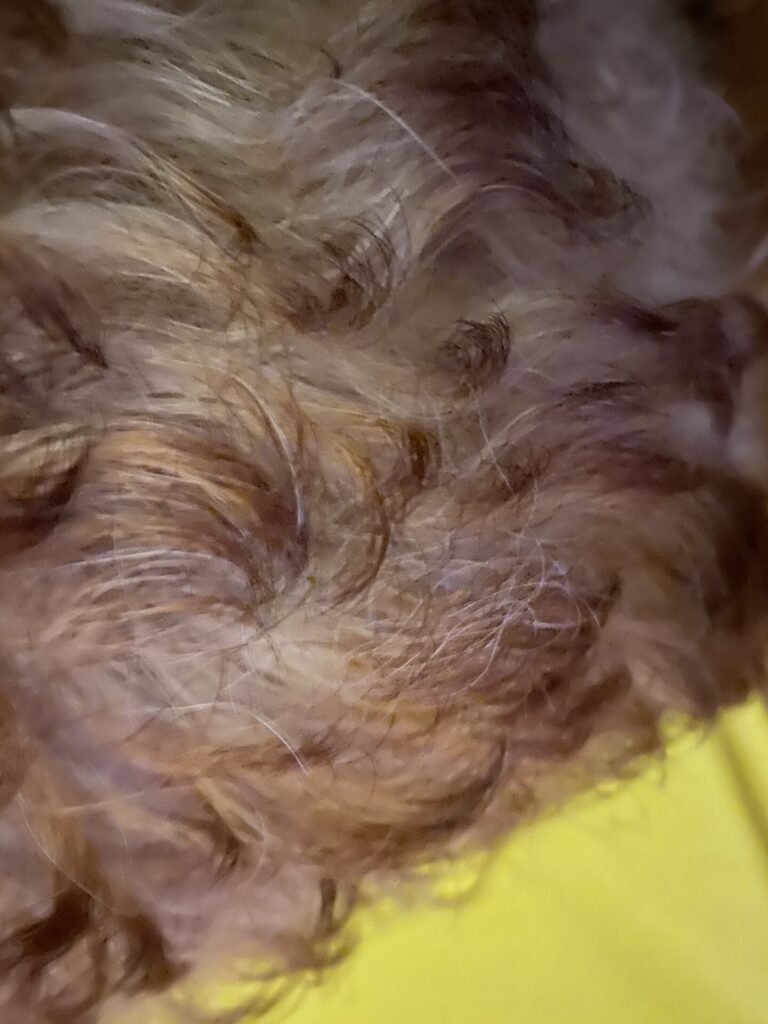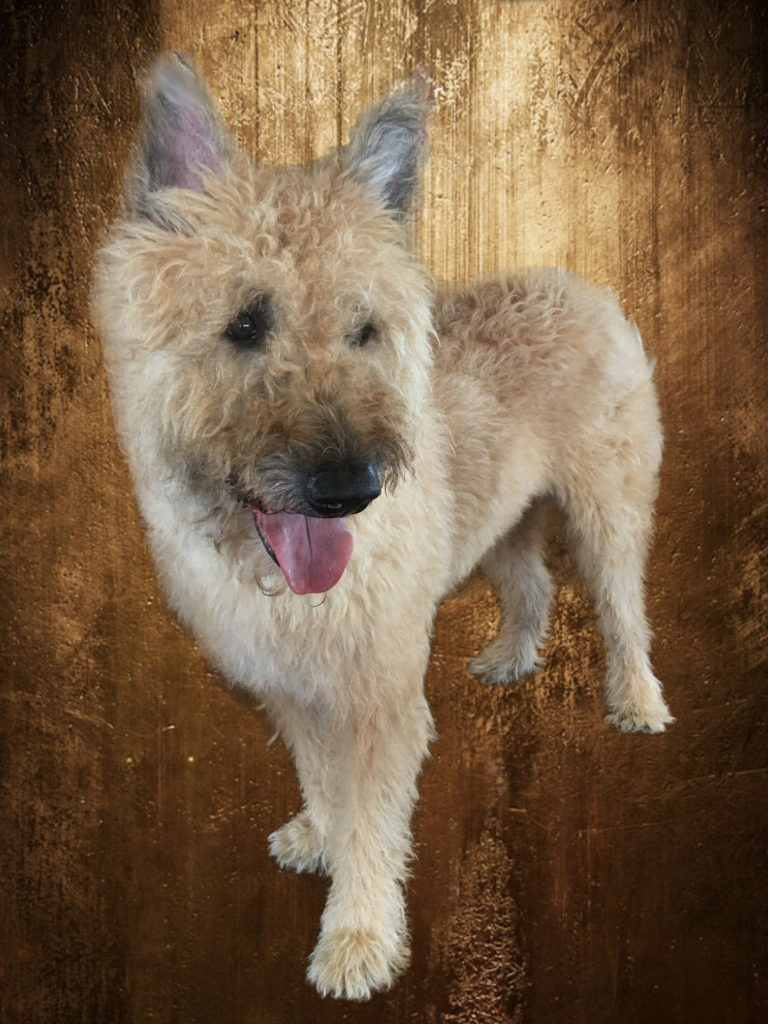Clippering or Scissoring is death to the Laekenois coat and will take away the coarse texture and essentially leave a coat comprised of soft hairs of undercoat that lend themselves to matting. Leaving a dog unstripped is more comfortable for the Laekenois than clippering. As you can always use a pin brush the dog or fall back to full or dead coat stripping, but once clippering or scissoring has been done the stripping of the coat can be quite painful for the dog as the constitution of the coat will be completely changed. The coat may lighten and become uniform in color as well as lacking a clear definition between topcoat and undercoat.
Why does clipping or scissoring the coat ruin the wiry texture?
To answer this question it’s important to understand that dog’s hair follicles are very different from a human’s. With human hair, there is ONE hair for each hair follicle. In a harsh-coated dog’s hair follicle, each follicle has several soft undercoat hairs, and one hard hair. When you’re stripping a dog, you’re pulling out that ONE hard hair and leaving the shorter, soft undercoat hairs. The hard hair is meant to be pulled out. It must be pulled to allow a new hard hair to grow. Remember that this hard hair comes out very easily with just the slightest tug and with NO discomfort to the dog because the root of that hard hair has shrunk as the hair grows too long.
Think of it much like a child losing a baby tooth: As the child grows older the baby tooth root starts shrinking so the tooth gets looser in the gums. Pretty soon the child’s tooth is so loose it can be pulled out easily so the new adult tooth can grow in. It’s much the same concept with harsh-coated hair on a wire-coated dog.
The big difference is that as long as the harsh hair remains in the follicle, no new harsh hair will grow. So if a dog with a wire coat is clippered, those hard hairs are never pulled out by the roots as they need to, so the follicles will not grow new wire hair. With each new haircut where no stripping or carding is done, the follicles will soon stop producing any hard coat at all, so all you’ll have are the several soft undercoat hairs growing. Those soft undercoat hairs usually have little color and tend to tangle (mat) up, which is why a clippered coat usually has a faded color to it, and tends to mat up easily.

Laekenois Coat post scissoring, note the pale color and soft texture of of the undercoat. The curl remains but, the texture is incorrect.
Also, each individual wire hair does not have the same deep color and thickness all the way through. Each hair has a hard wire point, but is semi-hollow down to about the undercoat level. It is very soft at the base and only lightly anchored in the follicle as it grows out, which is why they pull out easily.

Same dog as above, blown coat in an area that was not scissored. Note the dark red hard wire point on each hair. This coat is ready to be pulled.
The maintenance of the coat post clippering is far more complicated due to matting and tangling due to the coat texture. Leaving a Laekenois in the natural condition and simply brushing the dog is a far easier option.

- This is an example of a clippered Laekenois
- The coat is soft
- The coat lacks a topcoat
- This dog lacks a dark mask on the face, this is not a fault nor a result of using a clipper, it is simply a marking difference or in this case lack of marking.